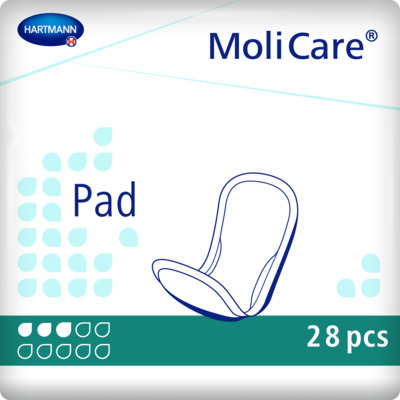Incontinence Advice
Urge Incontinence Guide
In this article, we're going to talk about something that is affecting the lives of about 200 million people across the globe. Urge Incontinence.
Incontinence is a common problem, particularly in women. It can be caused by a number of things: childbirth, surgery, or simply aging. When it comes to incontinence, the most common cause is weakened muscles. We sell a wide range of large incontinence pads which can be used to help you manage this condition.
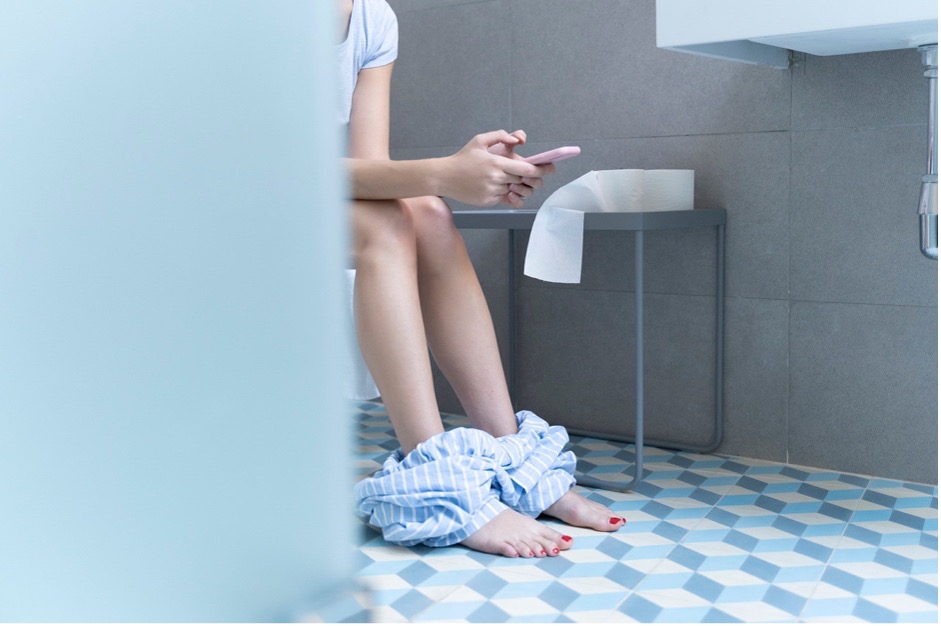
Urinary incontinence is the involuntary function of urinating. It is estimated that approximately 17% of women and 16% of men over the age of 18 have an overactive bladder, with an approximately 12.2 million having urge incontinence.
This guide provides a comprehensive view into the various types of incontinence, the symptoms, medical advice and treatment management advice.
What is urge incontinence?
What Is Urge Incontinence?
Urge incontinence is described as the inability to properly control your bladder or bowel, usually meaning you rush to the toilet. This condition can occur for the bladder, the bowels, or for both, causing single or double incontinence. The condition can cause a lot of stress and discomfort in your day-to-day life, but there are options available to manage the symptoms of urge incontinence.
Urinary Urge Incontinence
Urinary urge incontinence is a common complaint. It's characterized by a sudden, uncontrollable need to go to the bathroom. This can be a result of bladder contractions that happen too fast, or not at all.
There are two types of urge incontinence:
● Overactive bladder
● Stress urinary incontinence.
Overactive bladder is the complaint of urine leakage associated with a sudden, persuasive desire to void that is difficult to defer.
Stress urinary incontinence is chronic incontinence usually involves the bladder more directly whereby the detrusor muscle malfunctionshad . This leads to premature release of urine, or complete incontinence whereby the entire bladder empties. Learn more about stress incontinence in women
The causes of urinary urge incontinence are poorly understood, but urgency can be worsened by bladder irritation from cystitis (a bacterial infection), atrophic tissue due to hormone depletion, or bladder tumors or stones (small growths). Further disturbances in nerves, smooth muscle and urothelium have been described to cause this condition. Read more about urge incontinence here >>
Bowel Urge Incontinence
When you're suffering from bowel incontinence, it can feel like your body is betraying you. But it's not—the problem is that the muscles in your pelvic floor and around your anus aren't working well together.
The anal sphincter complex is made up of two muscles: the internal and external sphincter. The internal sphincter is circular muscle that runs along the rectal wall and controls whether or not stool can pass through. It's controlled by the autonomic nervous system, which means it works automatically and we can't control it consciously. The external sphincter is a continuation of the pelvic floor muscle, which we do have some control over—we can squeeze it voluntarily when we want to stop stool from coming out.
When you're healthy, everything works together smoothly: stool enters the rectum and doesn't come out until you're ready for it to go; when you are ready for it to go, your pelvic floor tightens around your anus and holds everything in place until you're done defecating. But if something goes wrong with this process—if there's too much pressure on one side or another—then things start getting messy!
Once again, the causes are less well known, yet majorly the weakening of the sphincter which leads to bowel urge incontinence is due to damage of to the pelvic floor sustained during childbirth. Faecal incontinence may also occur after spinal injury, stroke, in Multiple Sclerosis and in long-term diabetes. Sometimes, it may be as simple as your diet that requires changing to prevent incontinence (The IBS Network, n.d).
What Are the Symptoms of Urge Incontinence?
As with the causes of urge incontinence, symptoms differ from person to person. Some may experience small leakages with minor problems, yet others may display full incontinence with complete loss of control of their bladder or bowels (Age UK, 2017).
Symptoms of urge urinary incontinence
The symptoms vary in degree and type between individuals.
The Following Symptoms Are Generally The Most Common:
- Sudden urge to urinate followed by an involuntary loss of urine.
- Need to urinate often, including throughout the night.
- Feeling that the bladder doesn’t empty completely.
Symptoms of urge urinary incontinence
The symptoms vary in degree and type between individuals.
The Following Symptoms Are Generally The Most Common:
- Leaking from the bowel.
- Urgent need to open bowels followed by an involuntary loss of faeces
When Should You Seek Medical Advice?
The statistics are shocking.
According to Urinary Incontinence in Women Statistics (2018), it takes on average 6.5 years for women to get a diagnosis for urinary incontinence.
That's a long time to be living with the symptoms of incontinence.
When you have incontinence, you may feel like no one understands what it's like to live with the condition. But the truth is, most of us have been there at some point in our lives.
Urge incontinence is a fairly common condition, affecting millions of people around the world. The good news is that it's highly treatable and often curable.
The first step in treating urge incontinence is identifying it. If you're experiencing any symptoms of urge incontinence, please seek medical attention immediately. Urge incontinence can be an indicator of another disease such as:
- Bladder infections
- Inflammation
- Obstructions
- Kidney or bladder stones
So it's important to get checked out by a doctor if you think you might have it.
Incontinence can be caused by a number of factors, so there are usually many possible reasons why people become incontinent. If you're experiencing this condition, it's important to remember that primary care physicians are used to conducting medical histories, examinations and providing treatment advice. These steps can improve the quality of life of incontinent adults. Further, they are able to refer complex cases to specialists, which allows the reconfirmation of the medical history, further examinations, urinalysis and a treatment decision. They are able to recommend medications or dosages, and with consistent reassessment (like monthly checkups), they are able to change dosages over time. This specialised and tailored treatment plan can aid in the management of your condition—meaning it improves your quality of life!
How can we help you? We provide you with a comfort before medication will give first effects.We know that dealing with incontinence can be stressful. We also know that you probably don't have time to waste on bulky, uncomfortable products.
That's why we're proud to offer the HARTMANN range of incontinence products—they're simple to put on and remove, they offer maximum protection while remaining discreet, and they're super absorbent, so you can rest easy knowing you're covered.
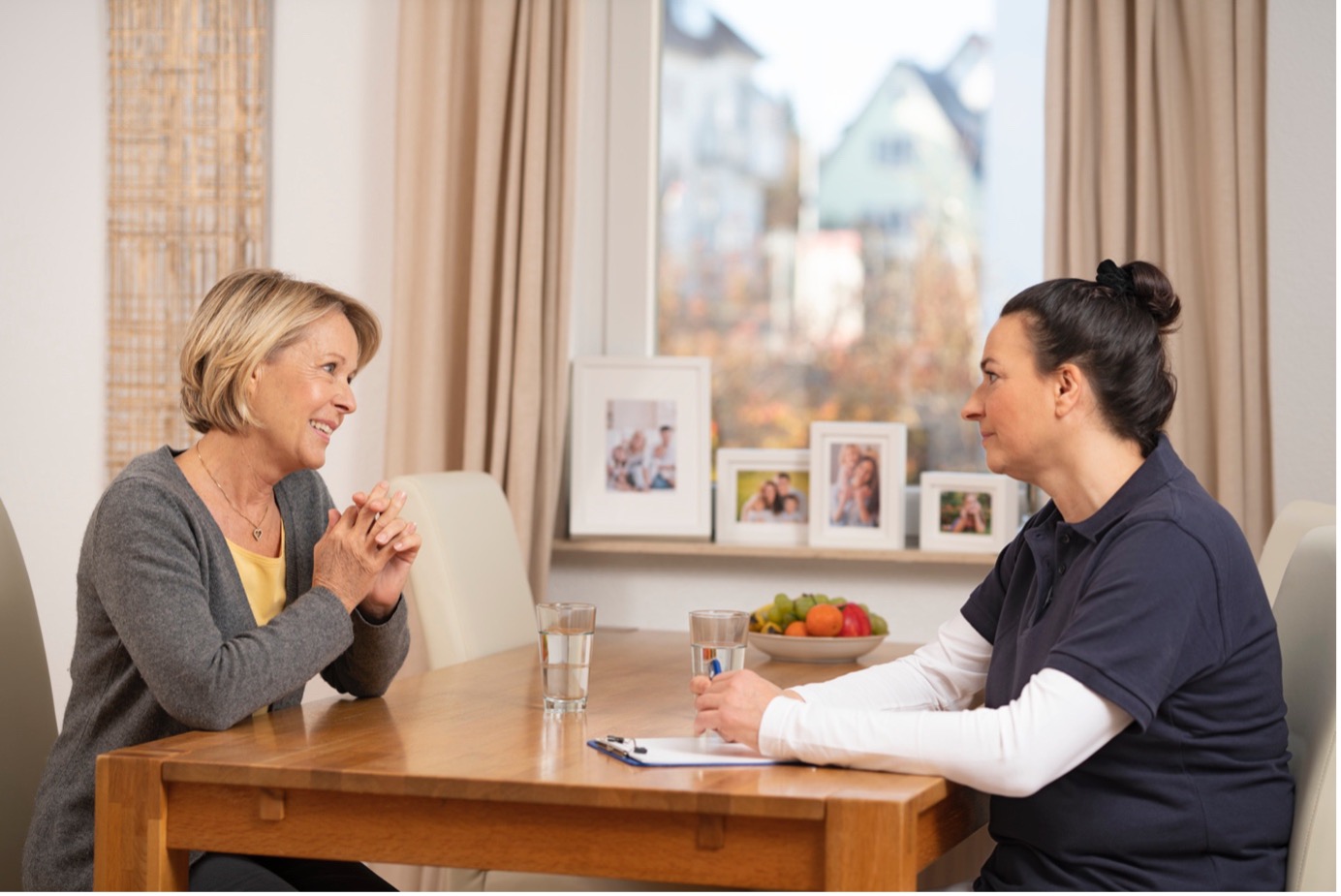
How to Treat/Manage Urge Incontinence?
There are varied treatment and management options, usually varying on a case-by-case basis. Although there is a wide range of treatment options, management is usually the first-line option for most people.
This is because urge incontinence is usually not a progressive or chronic condition, and therefore therapies can be effective and safe and are usually preferred by people as an initial approach (Faiena, I., et al, 2005). If these therapies are not effective, surgical intervention can take place. One of the recommendations of the 1992 Agency for Health Care Policy and Research guideline states that “surgery, except in very specific cases, should be considered only after behavioural and pharmacologic interventions have been tried.” (Faiena, I., et al, 2005).

Conservative Behavioural Treatment
Many people with bladder problems have found biofeedback to be an effective treatment. Biofeedback is a type of conservative behavioural treatment and is the practise that helps individuals learn how the body behaves and such can work out when it isn’t functioning properly. It can help recognise when it the bladder or bowels are overactive.
Two techniques include
- Timed voiding involves using a chart to record the times that you pass urine/faeces and also when you leak involuntarily. This technique works by understanding your leakage patterns, therefore avoiding leakage in future by visiting the bathroom at those times
- With bladder training, the intervals which you go to the bathroom are elongated, waiting a little longer before each time. You follow a certain pattern, for example, every hour for a prolonged period of time. This interval is then increased, such that the interval is increased by up to four hours in the long term. This can aid in training the bladder and ‘teaching’ it when to pass urine, restoring normal bladder activity (Faiena, I., et al, 2005).
Pelvic floor exercises can help strengthen the muscles that support the bladder, uterus and bowels. Strengthening these muscles can aid in reducing or preventing problems such as urine or faeces incontinence. To practice these exercises, you pretend you are trying to stop the flow of urine or preventing the release of gas, causing the contraction of the pelvic floor muscles. Usually it is recommended that these should be done every day, roughly five times each day. These exercises can improve your ability to hold urine until you get to a bathroom, avoiding accidental leakage (NHS, 2017).
Medication Treatments
If behavioural therapies are not an effective treatment for urge incontinence, your medical professional may prescribe medication called antimuscarinics. They are often used in primary care in combination with behavioural and lifestyle changes (McDonnell, B. and Birder, L.A., 2017). There are many subtypes of this medication, but common types include oxybutynin, tolterodine and darifenacin. Usually, patients are prescribed at a low dose to avoid any possible side effects, and doses can be increased until the medication proves effective. Reassessment occurs after approximately 4 weeks, and then every 6 to 12 months thereafter if the medication continues to help (NHS, 2017).
Mirabegron is an alternative medication if antimuscarinics are unsuitable, ineffective or if they cause unpleasant side effects. This treatment usually causes the bladder muscle to relax, which helps with the filling up of the bladder and storage of urine. Studies have shown that this drug causes improved bladder compliance, increased bladder capacity, reduced urinary frequency, and reduced incontinence (McDonnell, B. and Birder, L.A., 2017).
Treatment Summary
|
|
Incontinence Products
Incontinence products cannot be classed as a treatment for urge incontinence, but they can offer comfort and reassurance to sufferers.
They Can Aid With The Continuation Of Normal Life And Products May Include:
- Absorbent products such as incontinence pads or pants.
- Handheld urinals.
- Catheter which can be inserted into your bladder to drain urine.
As a person living with incontinence, you know that the condition can be embarrassing and difficult to manage.
That's why we're here to help—with a range of products that are specially designed to help you manage incontinence. Whether you have mild or severe incontinence, our absorbent products come in a wide range of shapes, designs and styles to suit your needs.
We also offer wash lotion, cleansing foam, cleansing tissues and other skin care products to keep your skin sanitary and protected. Our private specialists offer a personal and discreet service supplying high quality incontinence products
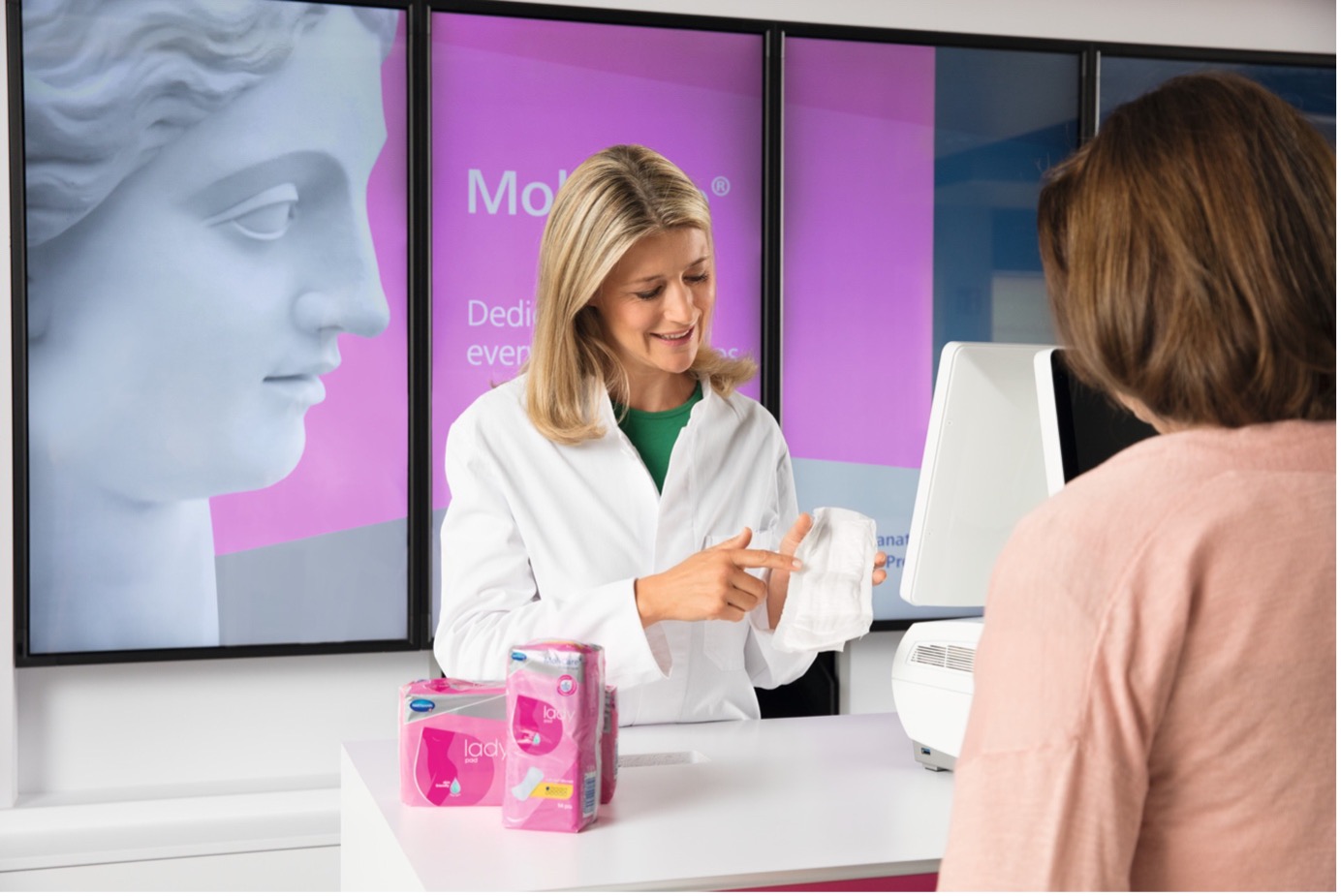
Incontinence Product Finder
Selecting the right products is key in ensuring security and discretion. If you’re not quite sure what you need, try our product finder. It’ll ask you a few questions about your needs and then provide a list of recommended products that may help you.
Find Product Incontinence Product FinderInvasive Treatments
Occasionally, usually in more severe cases, behavioural therapies and medications do not directly work in preventing urge incontinence. Therefore, more invasive treatments are required to prevent the condition. These treatments should be discussed in detail with a specialist, providing an outline of the benefits and risks associated with the treatment. Other options include (NHS, 2017 and WebMD 2005):
They Can Aid With The Continuation Of Normal Life And Products May Include:
- Botulinum toxin A (Botox) injection into the bladder, increasing its storage capacity and reducing leakage episodes.
- Hormone therapies for women, using oestrogen alone or in combination with progesterone
- Sacral nerve stimulation which delivers an electrical signal which controls the amount of abnormal contractions.
- Surgical procedures:
- Augmentation cytoplasty involves making your bladder bigger by adding a section of intestinal tissue to the bladder wall. This is usually accompanied by the use of a catheter.
- Urinary diversion involves redirecting the ureters (from the kidney to the bladder) to outside of your body, bypassing the bladder.
How to Avoid Urge Incontinence?
Incontinence isn’t always preventable, however in cases of acute incontinence your risk can be decreased.
By (WebMD, 2005 and MayoClinic, n.d):
- Maintaining a healthy weight.
- Dietary changes such as avoiding irritants like caffeine, alcohol and acidic foods.
- Changing when you eat as timing of meals may help reduce the possibility of anal leakage.
- Strengthening pelvic and sphincter muscles through practicing pelvic floor exercises.
- Do not smoke or seek advice for stopping.
- Bladder and bowel training – emptying at a specific time every day.
- Not drinking fluids right before you go to bed.
- Go to the bathroom on a regular basis, especially before physical activity.
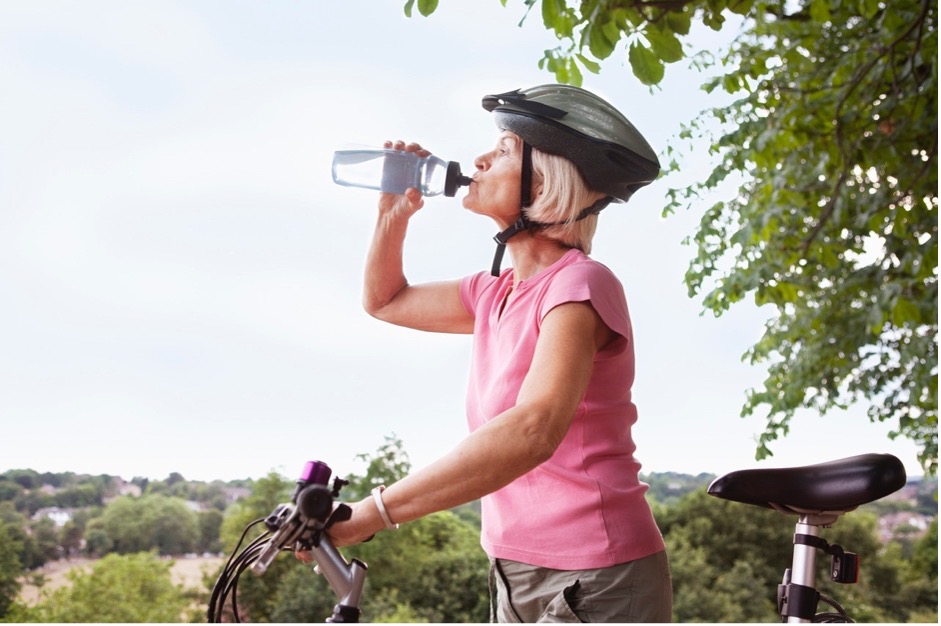
Summary
It's easy to laugh off incontinence as an embarrassing problem, but it can take a serious toll on sufferers. Urge incontinence is a common and uncomfortable condition that can have a severe impact on sufferers, particularly the elderly or nursing care patients. Fortunately, the condition is easily treatable and manageable with the right products and support. MoliCare assist with that support, supplying high quality and personalised pads, pants and incontinence care products in order to maximise your comfort.
If you or a loved one is facing urge incontinence, don't hesitate to reach out to your doctor or another medical specialist. You'll be thankful you did.
References
- An Overview of Urge Incontinence [WWW Document], 2005. URL https://www.webmd.com/urinary-incontinence-oab/urge#3 (accessed 12.24.18).
- Faiena, I., Patel, N., Parihar, J.S., Calabrese, M., Tunuguntla, H., 2015. Conservative Management of Urinary Incontinence in Women. Rev Urol 17, 129–139.
Haylen, B.T., de Ridder, D., Freeman, R.M., Swift, S.E., Berghmans, B., Lee, J., Monga, A., Petri, E., Rizk, D.E., Sand, P.K., Schaer, G.N., International Urogynecological Association, International Continence Society, 2010. An International Urogynecological Association (IUGA)/International Continence Society (ICS) joint report on the terminology for female pelvic floor dysfunction. Neurourol. Urodyn. 29, 4–20. https://onlinelibrary.wiley.com/doi/abs/10.1002/nau.20798- Incontinence help and advice | Age UK [WWW Document], 2017. URL https://www.ageuk.org.uk/information-advice/health-wellbeing/conditions-illnesses/incontinence/ (accessed 12.24.18).
- Incontinence Products & Supplies | HARTMANN Direct [WWW Document], n.d. URL https://www.hartmanndirect.co.uk/ (accessed 12.24.18).
- McDonnell, B., Birder, L.A., 2017. Recent advances in pharmacological management of urinary incontinence. F1000Res 6. https://f1000research.com/articles/6-2148/v1
- Non-surgical treatment [WWW Document], 2017. . nhs.uk. URL https://www.nhs.uk/conditions/urinary-incontinence/treatment/ (accessed 12.24.18).
- Steers, W.D., 2002. Pathophysiology of Overactive Bladder and Urge Urinary Incontinence. Rev Urol 4, S7–S18.
- Surgery and procedures [WWW Document], 2017. . nhs.uk. URL https://www.nhs.uk/conditions/urinary-incontinence/surgery/ (accessed 12.24.18).
- Urge incontinence · Urinary · Continence Foundation of Australia [WWW Document], 2018. URL https://www.continence.org.au/pages/urge-incontinence.html (accessed 12.24.18).
- Urge incontinence: Causes, Symptoms and Diagnosis [WWW Document], 2005. URL https://www.healthline.com/symptom/urge-incontinence (accessed 12.24.18).
- Urgency and Faecal Incontinence | The IBS Network [WWW Document], n.d. URL https://www.theibsnetwork.org/diarrhoea/urgency-and-faecal-incontinence/ (accessed 12.24.18).
- Urinary incontinence – Symptoms and causes – Mayo Clinic [WWW Document], n.d. URL https://www.mayoclinic.org/diseases-conditions/urinary-incontinence/symptoms-causes/syc-20352808 (accessed 12.24.18).
- Urinary Incontinence in Women Statistics [WWW Document], 2018. URL http://phoenixpt.com/statistics/ (accessed 12.24.18).
- Vogel, S.L., 2001. Urinary Incontinence in the Elderly. Ochsner J 3, 214–218.
- Wang, J.Y., Abbas, M.A., 2013. Current Management of Fecal Incontinence. Perm J 17, 65–73. https://doi.org/10.7812/TPP/12-064
- Whitehead, W.E., Borrud, L., Goode, P.S., Meikle, S., Mueller, E.R., Tureja, A., Wiedner, A., Weinstein, M., Ye, W., 2009. Fecal Incontinence in U.S. Adults: Epidemiology and Risk Factors. Gastroenterology 137, 512-517.e2. https://doi.org/10.1053/j.gastro.2009.04.054
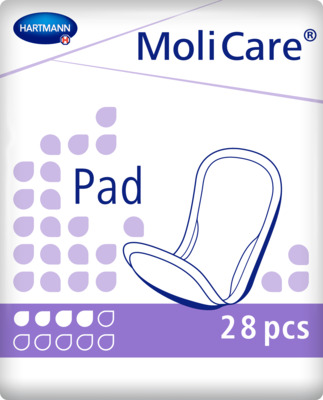
MoliCare Pad 4 Drops
<h2>Handy MoliCare Pad 4 Drops to Carry on the Go</h2> <p>Our MoliCare® Pad 4 Drops are an essential product for those experiencing slight incontinence, allowing you to regain control and live your busy and active life without the interference of bladder weakness. Designed for both men and women, this pad for men and women offers exceptional dryness and protection, ensuring your comfort and confidence.</p> <h2>‘Barely There’ Reassurance and Reliability</h2> <p>The MoliCare® Pad 4 Drops are slimline, discreet, and adjusted to fit your body seamlessly. It fixes securely inside your underwear, providing a ‘barely there’ comfort feel. With its soft and skin-kind fabric, along with a wide adhesive fixing strip on the backsheet, you can go about your day with the assurance of being protected against leakages.</p> <p>The absorbent core effectively prevents your skin from becoming too moist, while the elastic anti-leak edging adds an extra layer of security and peace of mind. Say goodbye to any worries about odours, as the MoliCare® Pad 4 Drops also neutralises odours to keep you fresh and confident throughout the day. Don't let incontinence hold you back from living life to the fullest.</p> <p>Ordering your MoliCare® Pad 4 Drops is hassle-free, as we offer fast and discreet delivery direct to your door. With our price match promise, you can trust that you're getting the best value for your money. Plus, enjoy free delivery on all orders over £40.</p> <p>If you need assistance in finding the perfect incontinence product for your needs, our friendly customer care team is here to help. Don't hesitate to reach out to us at 0800 028 9470. Take control of your life with the reliable protection and comfort of the MoliCare® Pad, alongside other <a href="https://www.hartmanndirect.co.uk/incontinence-products/incontinence-pads" style="color:#0563c1; text-decoration:underline">incontinence pads</a>.</p> <p> </p>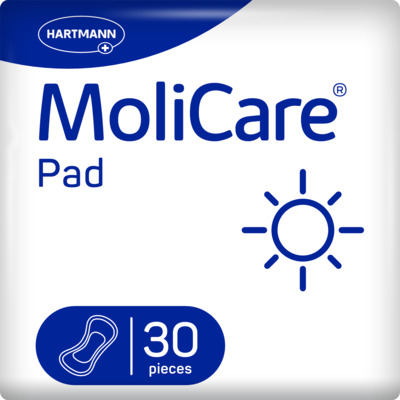
MoliCare Pads for Day
<h3>Incontinence pads for protection during the day </h3> <p>Even slight bladder weakness can be a burden in everyday life. There is a simple and affordable solution for this: MoliCare® Pad Day delivers discreet, reliable protection that helps you manage life’s daily challenges. </p> <p>The highly absorbent core inside the incontinence pads quickly locks away urine to ensure a pleasantly dry feeling on the skin. At the same time, it neutralises unpleasant odours. </p> <p>MoliCare® Pad Day are designed for discreet protection during the day. You can recognise the daytime incontinence product by the sun symbol on the packaging. They complement MoliCare® Pad Night incontinence pads which provide reliable protection at night. </p> <h3>Who is MoliCare® Pad Day suitable for? </h3> <p>MoliCare® Pad Day incontinence pads are suitable for people with mild bladder weakness. They leak anywhere from a few drops to 100 ml of urine between visits to the toilet. </p> <p>Incontinence pads are suitable for active women and men users whose mobility is not restricted. They can go to the toilet independently and without assistance. </p> <h3>Cheap incontinence products: comfortable, discreet protection </h3> <p>The incontinence pads have a highly absorbent core and odour control to keep you feeling fresh and comfortable. Thin and flexible, MoliCare® Pad Day are designed to be discreet, invisible under your clothing. Thanks to the wide adhesive strip, they remain securely in place even during sport. The incontinence pads are made from soft, breathable material so you feel comfortable all day. </p> <p>You usually need no more than two MoliCare® Pad Day incontinence pads during the day and one MoliCare® Pad Night incontinence pad for undisturbed sleep. This gives you a low cost yet high-quality round-the-clock supply of incontinence pads from HARTMANN. </p> <h3>We are HARTMANN </h3> <p>MoliCare® is HARTMANN’s extensive range of continence care. For over 40 years, we have been developing effective, reliable products that help people manage the challenges of living with incontinence. Our aim is to provide the right solution for every need. </p>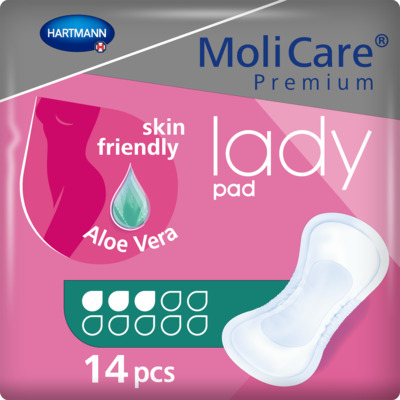
MoliCare® Premium Lady Pad 3 Drops
<h2>Lightweight Incontinence Solutions</h2> <p>The MoliCare® Premium Lady Pad 3 Drops is the perfect solution for women who are looking for a slim, discreet and comfortable way to manage slight bladder incontinence situations. The pad is small and lightweight, so it's easy to carry with you on the go. And the odour neutralisers help to keep you feeling fresh and confident all day long.</p> <p>With a fast and reliable delivery, you can apply your MoliCare® Premium Lady Pad 3 drops in next to no time. With their compact appearance, they are easy to apply and are barely noticeable when fitted under your underwear. For extra skin-friendly protection, we equip these products with Aloe Vera to maintain a healthy skin, as well as absorbent and secure technology. It is truly one-size fits all with this range!</p> <h2>Maintain peace of mind</h2> <p>These lady pads contain 14 pieces per bag, are set at an affordable pricing, and will prevent leakages, maintaining peace of mind in all social situations.</p> <p>If you require additional information, do not hesitate to get in touch with our reliable customer service team, who are ready on hand to answer your questions. If you're looking for a reliable pad that will help you stay dry and comfortable, the MoliCare® Premium Lady Pad 3 Drops is a great option. Order yours today!</p>